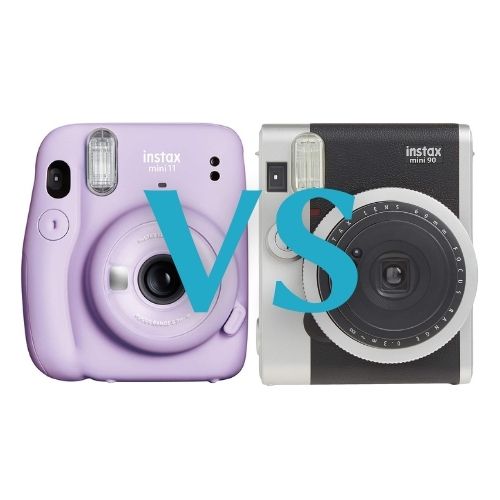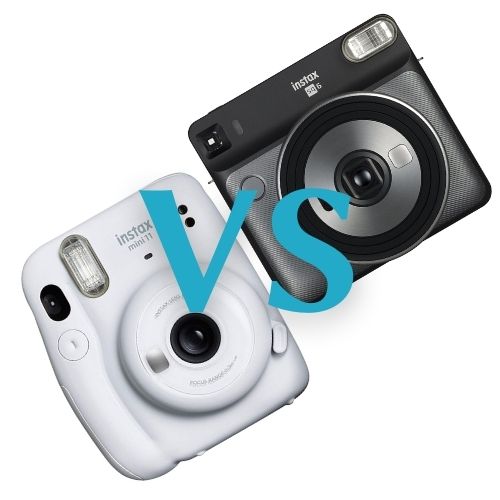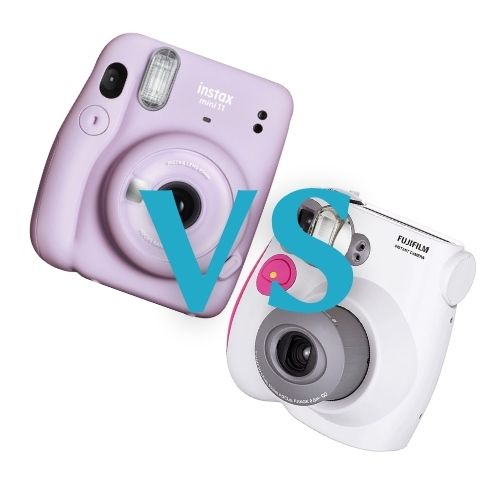
Old-fashioned pictures are still relevant, despite the ever-increasing use of virtual photobooks and sharing options. Instax Square SQ6 and SQ10 are 2 instant camera models that you can purchase if you want to feel the excitement of seeing your images being printed on the spot. However, you might not want to buy both, especially if their features are rather similar, so let’s have a look at them to see why are they special.
Common features
It’s good to know what aspects these two gadgets have in common, to realize just how similar they really are.
- Same picture size – 2.4 x 2.4 in
- Pictures exit from the top of the device
- They have filters
- Timer
- Brightness adjustment
- Overexposing the pictures
- Tripod socket
How are they different
It’s mostly because of their differences that we can say one camera is better than the other, so without further ado, let’s get started!
Appearance
Taking a look at these 2 cameras, they couldn’t be more different. As far as dimensions go, the SQ6 measures 6.1 x 6.1 x 4.1 in and weighs just 8 ounces. SQ10 measures 6.5 x 6.5 x 5 in and weighs 1 lb. Despite these numbers, the SQ10 looks more compact and with minimal details next to the SQ6, as the lens occupies most of the front of the device. The S10 also has rounded corners, as opposed to the sharp ones of the SQ6.
Digital
These days, editing the pictures before printing them or before sharing them is something most users do. If this is a feature you are interested in, then the SQ10 is the camera you should consider getting. It has a 3 inch screen on the back, along with several controls to allow you to check the image before printing and sharing it.
Storage
We already mentioned that the SQ10 has digital features installed. As a result it can also keep up to 50 images in its internal storage unit, but it also accepts a MicroSD memory card, to extend this ability. The internal storage ability allows you to choose which pictures to print.
You should be warned though that the pictures can only be accessed on a computer through the memory card and card reader. Don’t be too disappointed seeing your photos are raw and unedited once you transfer them from the memory card to your machine – this is all the camera can do for now. The card allows you to transfer other pictures from your computer to the camera as well, and have them printed that way. You’ll have to use the right file format and size though.
Focusing
The lens focus of these cameras are rather different. On one hand, the SQ6 has 3 levels of focus, to help you take the clearest possible pictures. Your options are: the Macro for subjects between 0.3 and 0.5 meters, Normal mode for objects found between 0.5 and 2 meters, and the Landscape mode for everything further than 5 meters. On the other hand, the SQ10 has an autofocus and the shortest accepted distance to the lens is 10 cm.
Mirror
Having a mirror is really helpful when trying to take a selfie picture, especially when there’s no possibility of erasing the wrong one. For this purpose, the SQ6 comes with a small mirror places next to the lens, for a very accurate framing. The SQ10 doesn’t have a mirror, but since it’s a hybrid camera, you don’t really need it.
“Special Effects”
While both cameras have filters, the older model only comes with 3 such options. The filters get applied over the flash, and the picture gets printed with the chosen hue: orange, purple or green.
The newer model has 10 filters you can apply to your photos. Additionally, you can edit your pictures with a partial color effect, and you have a few colors to choose from. This is not all, as you even have the option to use vignettes on the image.
Batteries
Both of these cameras need batteries to work. The difference is that the SQ6 requires two CR2 batteries that cannot be recharged, but they do last for about 300 photos. The SQ10 camera on the other hand, uses a rechargeable battery. To recharge it, you’ll use an USB cable, but it can’t do data transfers between the camera and the computer.
Strap
Having a way to carry the camera without it being in the way is rather useful, and a strap is very useful for this purpose. Both of the cameras have loops for a strap and they are sold with one. The difference is that the SQ6 has a neck strap whereas the SQ10 comes only with a hand strap. Clearly, the SQ6 wins in this department, as the SQ10 requires further spending.
Shutter
This feature should be mentioned because the SQ10 model has two such buttons, while the SQ6 has only one. One the SQ10 camera, you can set one of the shutter buttons to act as a mode selector. Additionally, if you’re left handed, it might be easier for you to use the camera with a button on the left side.
Conclusion
Overall, both these cameras are good gadgets to own at parties or on a trip when you want to take pictures for a scrapbook. Their downside is that the film is pricier than that of the FujiFilm Wide or the Mini camera models.
With the SQ6 being fully analogue, the pictures you take and are wrong, are also more expensive. The SQ10 being a hybrid camera model, allows you to choose which pictures to print, as to save some money, which is a great advantage.
We also think that SQ10 is a winner when it comes to the number of pictures it can take before it can no longer take photos – at least 50, as mentioned previously. This is a really useful feature in many situations.









